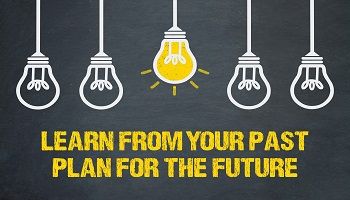How Project Managers May Help Address Construction’s $30-$40B Productivity Problem
Productivity has been in steady decline—CNBC reported a few months ago, for example, that the U.S. had experienced five consecutive quarters of year-over-year declines in worker productivity. Last year, worker productivity was falling at the fastest rate in four decades.
Productivity in construction is an even harsher reality, the industry faced with skilled labor shortages and a recent FMI Corp report that showed productivity is a $30 billion to $40 billion annual problem, affected by planning, communication, and collaboration 3 in 4 times.
In this article, I discuss how, in the construction industry that faces labor shortages topping half a million, the role of the project manager is ever-critical in empowering the team to work more collaboratively, heed strict quality assurance requirements, and achieve greater productivity outcomes onsite to, correspondingly, drive better customer outcomes.
The Role of Project Management in Construction Projects
Studies show “an extremely strong correlation between the Project Manager and the success of the construction projects” (ref 1). What’s more, project managers with high emotional intelligence have been shown to be a catalyst for empowering team cohesion and effectiveness (ref 4), particularly with the soft skills to navigate teams through change management – a key competency that successful project managers in the construction industry possess, according to a systematic industry literature review (ref. a).
The role of a construction project manager is a multifaceted one, its duties perhaps described as a myriad of spinning plates, routinely responsible for example (ref. 3) –
- Project cost estimating
- Project planning
- Production planning
- Resource management
- Scheduling
Project managers in construction are able to address these myriad challenges through agile methodologies to drive greater flexibility, correspondingly higher productivity outcomes onsite, and an integrated approach is of particular use to facilitate greater cross-functional collaboration.
Integrated Project Management
Experts recommend companies employ an “integrated” construction project management approach (ref 2); project managers in construction have a wider scope than the traditional time-cost-quality project management triangle, needing to address, for example, critical factors like “sustainability, health and safety, ethical requirements, social responsibility and security.”
Authors view “integration” as a “keyword” of project management in construction, with the “project managers of tomorrow [requiring] new competencies and new ways of working that embrace technology and communications” (ref 2). The authors stress the importance of “Integrating the different and fragmented process in the supply chain and with the design team.”
Ways project managers can integrate project systems and workflows to drive greater transparency, real-time data sharing, and correspondingly higher productivity outcomes onsite include:
Materials and Inventory
Integrating project management with materials and inventory management systems ensures project teams onsite get what they need onsite when it’s needed, that materials are appropriate (i.e., not damaged), so they can perform work on schedule.
A synchronization between project and inventory management platforms not only helps declutter and decrease outdated project data as changes are made in real-time, but also helps project managers better oversee projects with relevant alerts that:
- Better predict stocking needs and help the team assess how they might acquire safety stock to prevent stockouts
- Provide access to pertinent job costing information, helping project managers better forecast and improve accounting across companies’ operations; they can also work with inventory managers overseeing equipment rentals to drive better profitability and ongoing maintenance.
When coupled with other proper inventory strategies (e.g., inventory tracking and kitting) and other IoT solutions, project managers can work in tandem with inventory managers to better account for inventory through its lifecycle.
Advertisement
[widget id=”custom_html-68″]
Safety
Project managers can work with safety managers to develop safety metrics (e.g., hazard identification and assessment; hazard prevention and control; program evaluation and improvement) that ensure onsite workers are managing their own risk and abiding by site rules. Safety is a team sport, hence why the team needs to keep each other safe, which will also help drive greater quality assurance targets.
What’s more, project managers can work with inventory and procurement (as discussed above) as well as construction technology teams to implement emerging technologies to support greater safety outcomes: e.g., robots to automate needlessly hazardous installations, newer-generation drills and impacts that prevent against kickback events, drones to perform overhead safety checks, etc.
Project Design
An integration between project management and design (e.g., architecture, CAD, and BIM) can help drive better quality assurance, ensuring not only scoped design plans are properly installed, but also that design-related problems (and ensuing rework) are mitigated.
According to Dodge Data & Analytics, 61% report BIM processes reduced project error. In the hands of a project manager, BIM data is powerful; what’s more, integrations with smart tools can help ensure project managers and the design team alike are getting application-specific reporting so they can verify not only that designs are accurate, but also that critical fasteners were installed to manufacturer specifications.
Sustainability
Platforms like Green Badger are purpose-built to measure, benchmark, and report on environmental, social, and corporate governance (ESG) metrics, helping project managers report to business owners data on carbon, waste, water, and energy data, how projects are completed to company sustainability targets, etc.
Bottom Line
As the construction industry combats with a labor shortage that has topped half a million, it’s no surprise that productivity issues on sites nationwide cost the industry between $30 and $40 billion annually. All this to say, the job of the construction project manager is of prevailing importance, helping companies negotiate complicated projects and workflows and empowering cross-functional teams to be more productive with continually shrinking resources. An integrated construction project management approach is the way forward to driving the productivity needle back in the right direction, improving company top and bottom lines, and improving the industry outlook as it looks to build the green infrastructure projects necessary for our planet’s continued existence.
References
-
Abdulsamad Ali, M. and Chileshe, N. (2009). The influence of the project manager on the success of the construction project [Paper presentation]. 6th International Conference on Construction Project Management (ICCPM) / 3rd International Conference on Construction Engineering and Management (ICCEM) Global Convergence in Construction, Jeju, Korea. https://www.researchgate.net/publication/265689336_The_influence_of_the_project_manager_on_the_success_of_the_construction_project
-
Fewings, P. and Henjewele, C. (2019). Construction Project Management: An Integrated Approach. (3rd Edition). Routledge Taylor & Francis Group.
-
Sears, S., Sears, G., and Clough, R. (2008). Construction Project Management: A Practical Guide to Field Construction. (5th Edition). John Wiley & Sons, Inc.
-
Zhang, Q. and Hao, S. (2022, 04). Construction project manager’s emotional intelligence and team effectiveness: The mediating role of team cohesion and the moderating effect of time. Frontiers in Psychology 13 https://doi.org/10.3389%2Ffpsyg.2022.845791
-
Oliveros, J. and Vaz-Serra, P. (2018). Construction Project manager skills: A systematic literature review. In P. Rajagopalan and M.M Andamon (Eds.), Engaging Architectural Science: Meeting the Challenges of Higher Density: 52nd International Conference of the Architectural Science Association (pp.185–192). The Architectural Science Association and RMIT University, Australia.
-




